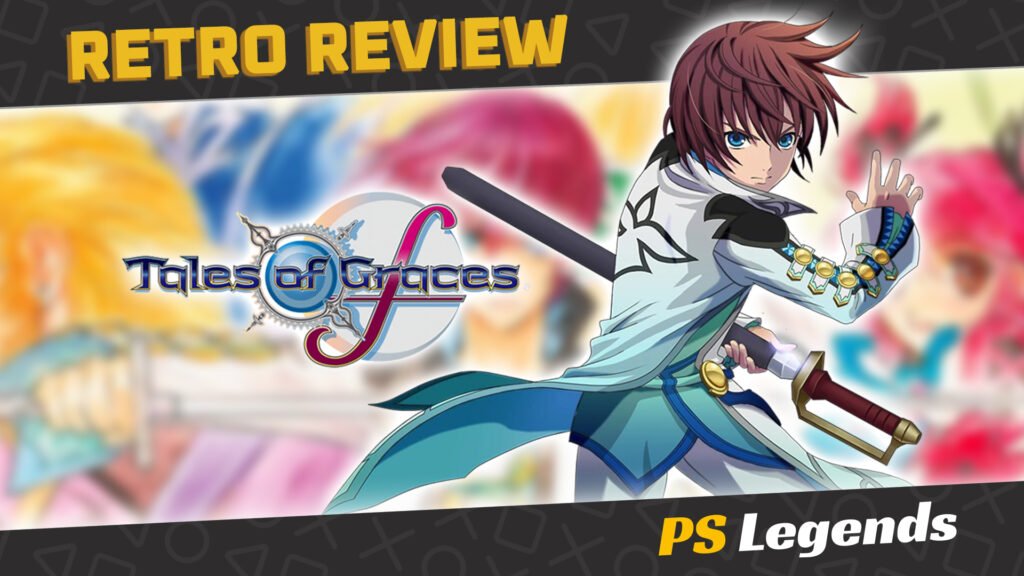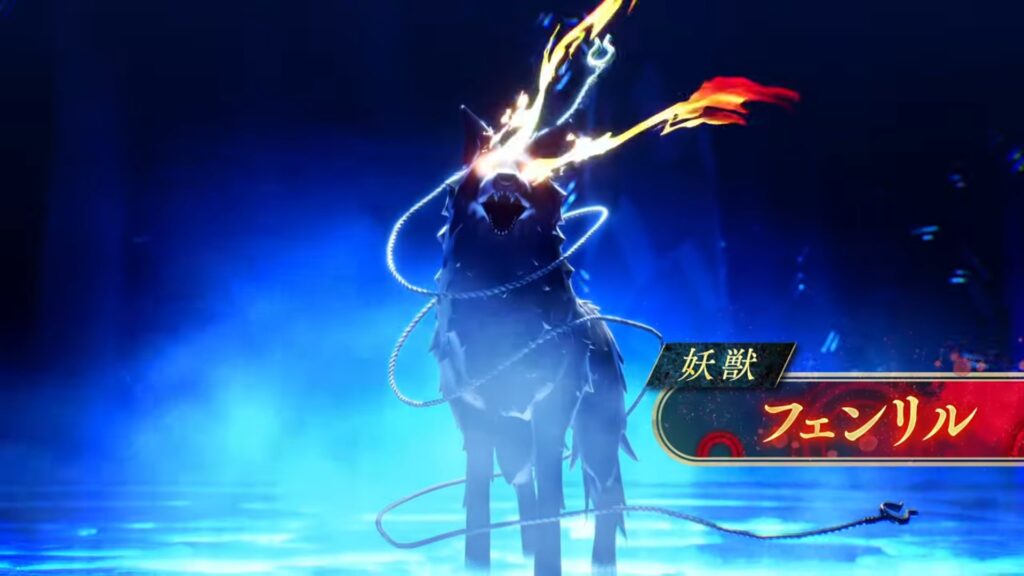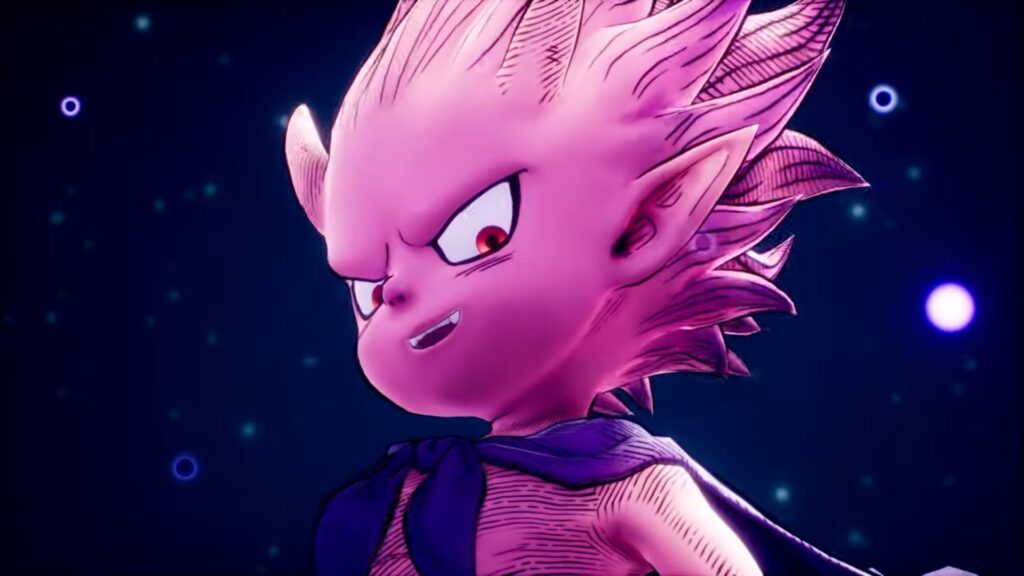Namco Bandai heard the call of many fans asking for the PlayStation release of Tales of Graces which was originally released seemingly exclusively for the Wii back in 2009. If you’re acquainted with the Tales series then Graces f won’t be something entirely new to you, yet if you’re a newcomer then you’ll find a plethora of gameplay mechanics and nuances that distinguish this series from other JRPGs. While the game finds itself following the traditional archetype of JRPGs, such as a somewhat clichéd story, Graces has something to offer to both veterans and newcomers alike.
On This Page
Introduction
Tales of Graces f is the twelfth main installment of the Tales series, and was ported to the PlayStation 3 and localised into English in 2012. The port adds an ‘Accelerate Mode’ to the gameplay and a post-game chapter entitled ‘Lineage & Legacies’ which greatly expands on the characters and lore.
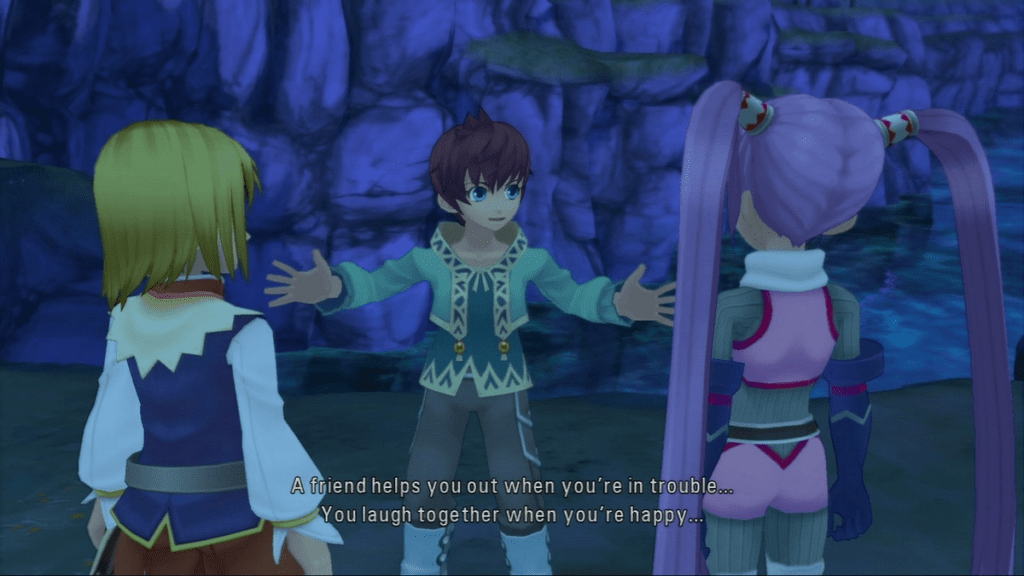
Story
Tales of Graces f is set in a world called Ephinea and starts in the protagonist’s younger years. Asbel is a child who tries to cope with the fact that he is the son of the Lord of Lhant, who is a very strict father. Asbel likes to live on the dangerous side, accompanied by his timid younger brother Hubert and his weak and sickly friend Cheria. One day, as Asbel and Hubert find themselves wandering through the woods, they find a mysterious amnesiac girl whom they name ‘Sophie’.
Asbel later finds himself befriending the son of the King of Windor, Richard, however this causes yet another argument between Asbel and his father. Eventually, Asbel finds himself in a dangerous situation where he and his friends are seriously injured and he is separated from Hubert and Sophie. Seeing that he lacks the power to protect others, he follows through with his dream of becoming a Knight rather than becoming the next Lord of Lhant and runs away from home to join the Knight Academy.
After seven years, Asbel has become stronger and a little wiser, but his ideal of wanting to protect everyone remains unchanged, and it’s here where the game really begins. Graces f tells the story of a group of childhood friends who are torn away from each other, only to be reunited 7 years later by war. Though they now fight on different sides, these individuals must prove that their friendship can withstand the test of time.
The story is divided up into three arcs: Past, Present and Future. The Past chapter centres on the events of the plot synopsis mentioned previously and spans just a few hours, while the Present chapter consumes the majority of the game. The Future chapter, which is what the ‘f’ stands for in the title, is a new add-on, not previously featured in the Japanese Wii version of the game. That isn’t to say that the Future arc is unwanted or unnecessary, in fact it offers mechanics that enhance the combat system of the game and feels something akin to a high-quality DLC episode.

Gameplay
The combat is action-packed and extremely fast-paced just like its predecessors, particularly Tales of Vesperia, but there are always differentiating factors between each title. Just like Vesperia, players will control one character in combat among a party of four and will attempt to clear the area of enemies.
While Vesperia used a linear plane to control the character with the added Free-Run mechanic to be able to run in full 3D motion, Graces uses a very different movement system. Characters move in a radial manner around the enemy. What this means is that while the player can move to and from the enemy in a linear fashion, he or she can strafe in a circular manner. This allows for a very intricate movement mechanic called Sidestep.
When an enemy attacks and the player Sidesteps right before the attack hits, the character will receive a perfect opportunity to counterattack. While the combat does appear exciting, all of the on-screen action can be terribly confusing. You’ll often find yourself lost in the action and button mashing until the fight is over. This usually works, but once you get addicted to simply bashing your way through fights you’ll find yourself getting pulverised by one or two bosses, who require a bit a strategy to bring down.
Graces consists primarily of two major locations: the field map and the battle screen. The field map is a realistically scaled 3D environment traversed by foot. On the field maps, various ‘Skits’ between the characters can be viewed. They involve animated character portraits, subtitles, and voice acting. Skits concern anything from character development to side details. The battle screen is a 3D representation of an area, in which the player commands the characters in battles against CPU-controlled enemies.
The game world feels somewhat lazy compared to earlier Tales games. In Vesperia you could explore a large 3D world map later in the game, discovering secrets at your leisure, and Tales of Symphonia offered two worlds to immerse yourself in. Graces f only offers a small world of three continents, with many areas needing revisiting several times throughout the story. There’s very little sense of exploration once you have access to the whole game world since you can simply ‘click’ on your desired destination to jump straight to it, not unlike Final Fantasy X.
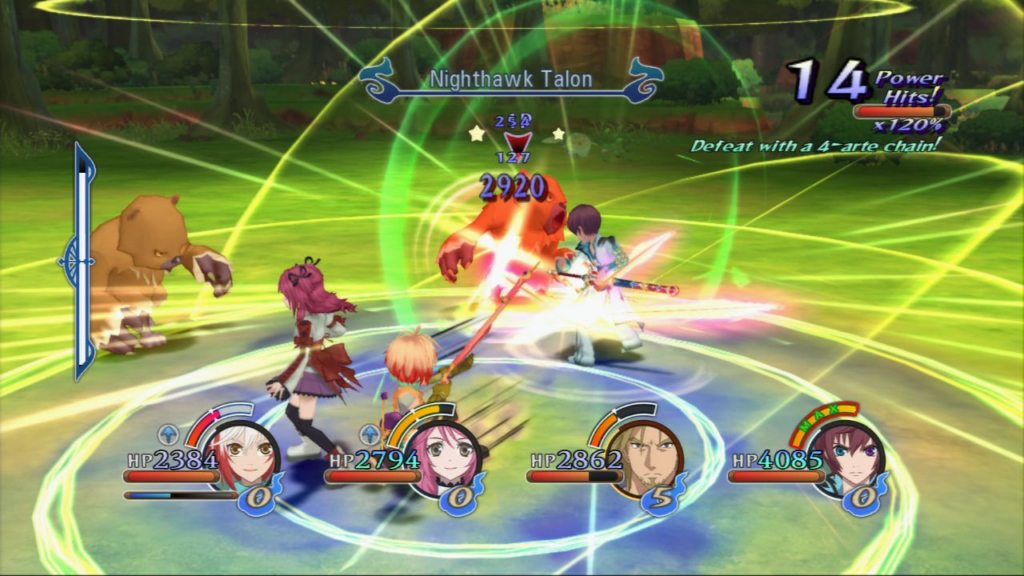
Graphics/Sound
The visual style that Graces f employs is a standard 3D anime type with a slightly watercolour-painting aesthetic. It’s nice, but it’s also generic, lacks detail and is quite overused, as the vibrant and colourful world that Graces f presents is commonplace in the Tales series and many similar JRPGs over the years. Occasionally, you’ll come across a very pretty HD anime video cutscene which breaks up the action nicely, and stylishly, if only momentarily.
Moving on to sound, the musical score is pretty average, ranging from light rock to generic piano pieces. Whilst the music fits each cutscene reasonably well, it never really blows you away. This doesn’t mean that it’s particularly bad or disappointing, it’s just nothing special. The voice acting however is very good, though you’ll probably recognise many of the voice actors from other games. I’m particularly fond of Cheria’s adorable girlyness and Sophie’s child-like innocence, voiced by Laura Bailey and Cassandra Lee respectively.
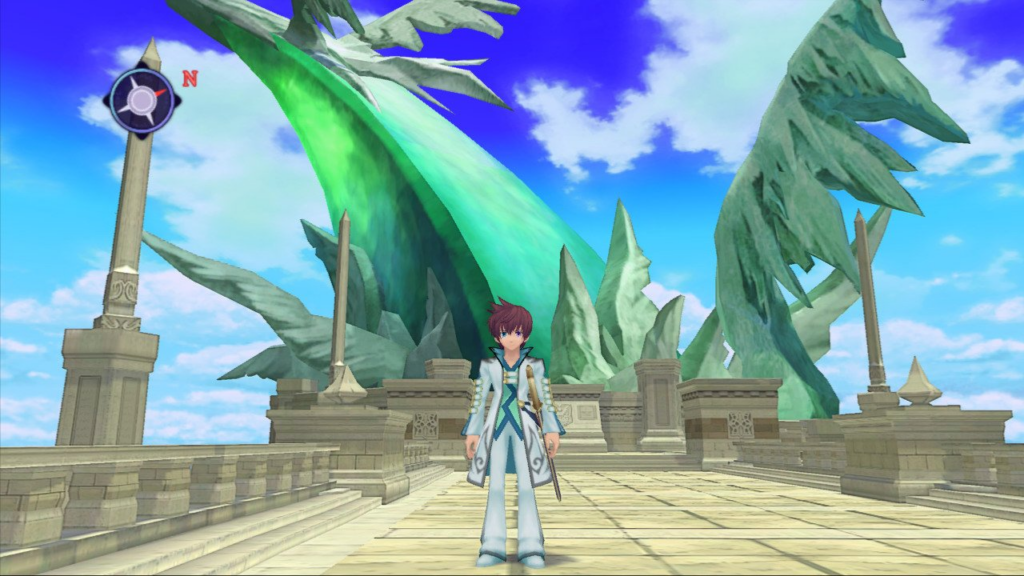
Conclusion
Overall, the premise is similar to many JRPGs. The main character is a very brash but straightforward male who strives to better himself. As you journey throughout the entirety of this 40+ hour narrative, you’ll find that Asbel’s view of the world is slowly refined, yet protecting his friends is still his ultimate goal. It’s something of a charm to see this happen in game, yet the narrative will really make you work for it.
You see, despite Asbel’s good intentions and commitment to his cause, he vastly overestimates his abilities regularly throughout the game, resulting in him being defeated and humiliated by the very people he’s trying to protect. It’s both awkward and unpleasant to see a protagonist who is, I’m sorry to say, something of an insufferable loser. Of course, this is only one example of the many aspects of the narrative in Graces f.
Other characters are also heavily developed throughout the game as their backgrounds are revealed through the main story arc or through the side-quests that the game has to offer. The Tales series differs from every other RPG out there because of the incredibly high level of character interaction. Every thought is shared through the optional ‘Skits,’ and it’s these cutscenes that give the games unique warmth, though it’s the ending that gives Asbel and his companions satisfying and overdue closure.
What separates Graces f from other games in the Tales series is the way it actually develops a love story within its narrative, which is something of a long-overdue plot point. It may be slow, subtle and lacking in any form of fan-service usually affiliated with the genre, yet it’s still something of a first for the series. It’s a simple yet effective story trope which even some later Tales games also lack, with Tales of Xillia and its sequel blatantly building sexual tension in its leading characters only to drop this relationship without any real payoff when the credits roll.
To summarise, Tales of Graces f is your standard JRPG. It almost feels like a tribute to those classics of the late 90s/early 00s. It’s nothing special, but that’s not necessarily a bad thing. Released in a time where fewer traditional JRPGs were being produced, it’s nice to find one that follows the traditions of old, without worrying too much about cutting-edge visuals and over-complicated combat (Final Fantasy XIII) or unnecessary online gameplay (White Knight Chronicles).
Nevertheless, Tales of Graces f has a consistently generic feel throughout, leaving us with something of a bland experience. It doesn’t even come close to matching the simple brilliance of predecessor Tales of Symphonia, but it will have to suffice until, hopefully, the Tales series finds its footing again.
Joys
- Includes a well-fleshed-out post-game chapter
- Simple yet solid combat
- A decent story building up throughout
Cons
- Irritating protagonist
- Bland presentation
- Generic feel, lacking unique qualities
